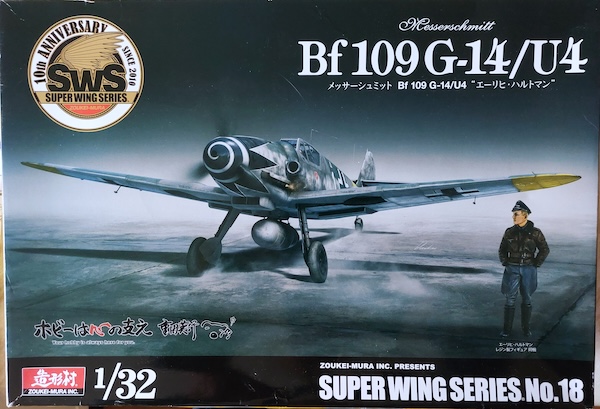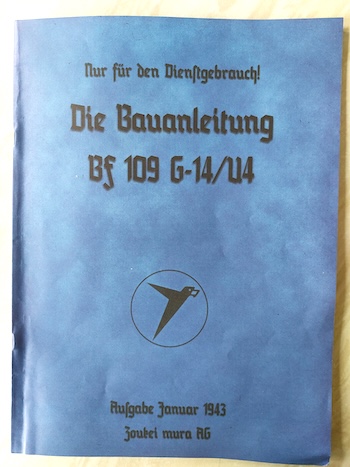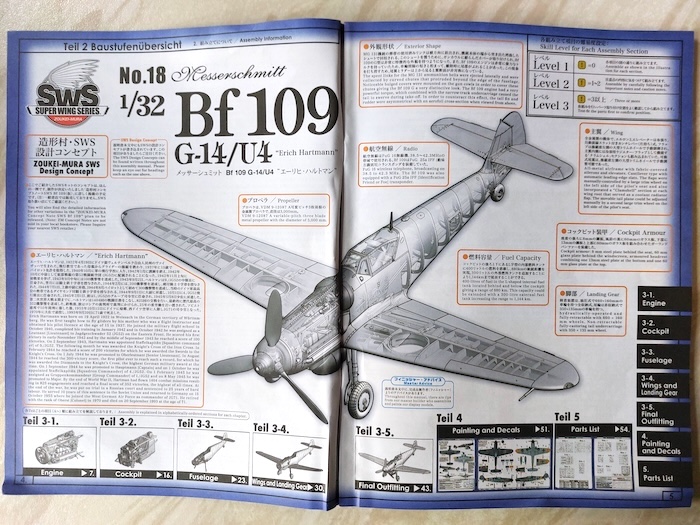
Full Review with Rob Ruscoe
The story of the development of the Bf109 is well known to most modellers and aviation enthusiasts, particularly the efforts to increase performance to keep the aircraft on a par with its arch enemy the Spitfire and then later on to combat the increasing American daylight bombing raids on Germany. Unlike the Spitfire however, the greater engine power and weight of the later 109s, resulted in a significant degradation in handling qualities. The well documented unfavourable landing and take-off characteristics due to the narrow, toed-in undercarriage had already seen the demise of many of the earlier 109s. With the increased engine power of the G series aircraft coupled with the increasing inexperience of pilots as the war progressed, meant the accident rate rose dramatically until it is estimated that more than half of all the Gustavs were written off before seeing action.
The G-14 variant was aimed at standardising all the improvements from the other G models such as a higher fin and rudder, a new engine and the MW-50 power boost system. This gave an increase in power of approximately 100HP by injecting a Water/Methanol mix directly into the cylinders. 118 Litres of this mix was carried in a tank just behind the cockpit which provided ten minutes of increased power. Armament was a 20mm MG 151 cannon firing through the propeller hub and two 13mm MG 131 machine guns synchronised to fire through the propeller disc. Although additional gun pods could be mounted on each wing, these were not carried on Hartmann’s aircraft.
Erich Hartmann, of course, was the leading ace of all time. Born in 1922, he completed flight training in early 1942 and was posted to JG52 operating on the Eastern Front. He scored his first victory in Nov 42 and by Sep 43 the following year he had 100 victories. One year later his score had risen to 300. By the end of hostilities Hartmann had shot down a total of 352 enemy aircraft and was Gruppenkommandeur of JG52 with the rank of Major. After serving ten years incarceration in a Russian prison, he returned to Germany and served in the West German Air Force as commander of JG71. He retired in 1970 as a Colonel and died in Sep 1993 at the age of 71.
The Kit
The kit arrived in a rather large box similar in size to Italeri’s Macchi 202 which I built recently. Unlike that box however, this one was full to the brim with thirteen individually bagged sprues. In addition, there is also a nice resin figure of Erich Hartmann included with this boxing. He is modelled standing with hands in pockets in a typical pilot pose. Also included are a canopy mask set and a set of decals by Cartograf. The only disappointment was the lack of any seatbelts.
The detail of the parts is, quite simply, superb. The surface detail of the 109’s flush fitting panels is beautifully rendered and the best I’ve seen on any model of this aircraft.
The instructions of any Zoukei Mura kit are an example of how it should be done. Along with Wingnut Wings/KoTare, these are not just about construction of the model; they also aim to provide the builder with historical information and the flavour of how the actual aircraft went together.


For the model itself, ZM take this ethos to the extent of providing a great deal of the internal structure of the airframe, along with details such as magazines, fuel tank, radio boxes etc. which will never be seen again after the model is complete. Even the engine has the pistons and cylinders moulded in! Some modellers will undoubtedly feel that all this hidden detail is a waste of time and effort but I think that would be missing the point. To most of us I think, the pleasure of actually building a kit is what it is all about and, if we can learn more about what the actual aircraft contained and how it went together during this process, then so much the better. For those who would disagree, there are plenty of other 1:32 Bf109 kits available.
The building sequence is divided into major sections which all begin with photographs of the completed stage so you can see what you are trying to achieve. Colour call-outs are accurate and clear, not only on larger parts, but also for the smallest details.